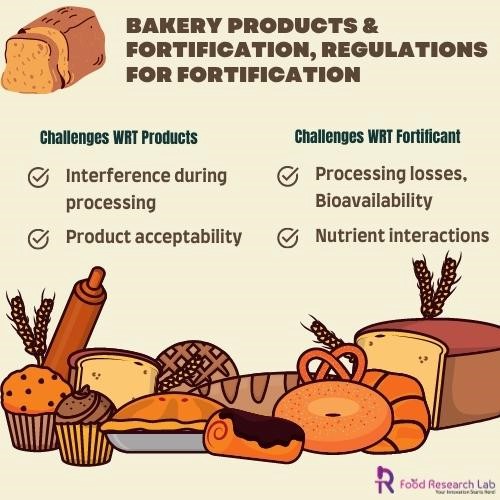
Bakery Products & Fortification, Regulations for Fortification
Scientific verification of the bioavailability of micronutrients in the body is required for a food to be fortified for the public. There are specific conditions needed for food fortification.
By the Indian government Heme, iron should not be utilized wherever the iron is present, according to the FSSAI.In any form, it is employed as a nutritional source in food items. The following is according to the FSSAI:
Salt, Milk Atta, Maida, Oil, and Raw Rice are examples of food products that can be fortified.
Bakery foods include cakes, pastries, bread, biscuits, and other baked goods containing a considerable quantity of wheat flour and maida, blended with other ingredients and heat processed to eliminate moisture, giving the baked goods their correct shape and texture. Due to the low cost and traditional baking techniques, 60% of bakery products are sold in the unorganized sector.
The following are some of the general obligations that food makers must meet when fortifying food ingredients:
1. Performing quality assurance and submitting documentation of the procedures completed.
2. A certificate from a laboratory stating that the fortified food complies with the rules.
3. Keeping accurate records of the fortifiers and the production process.
4. Adequate monitoring measures at all stages of the process.
5. Fortificants and fortified foods are subjected to random testing.
6. Technical equipment and procedures are audited regularly.
7. Adherence to the FSSAI’s excellent manufacturing practices.
8. The purity standards for fortifiers are referred to.






